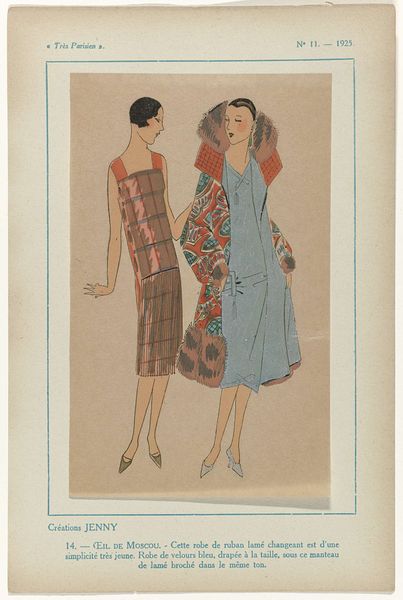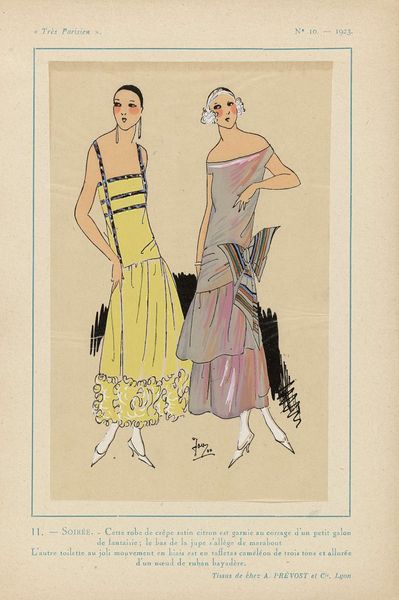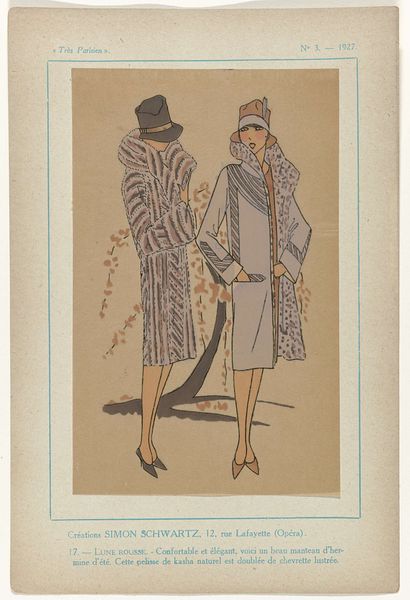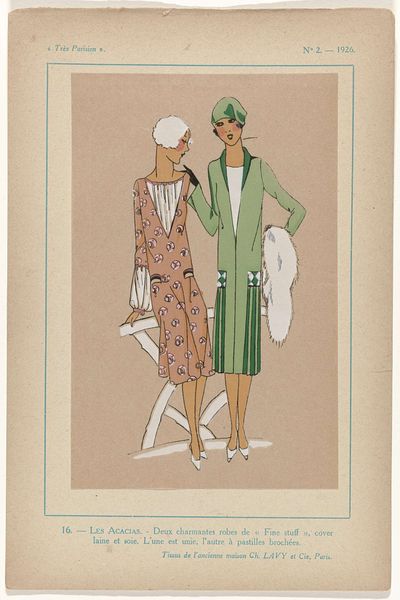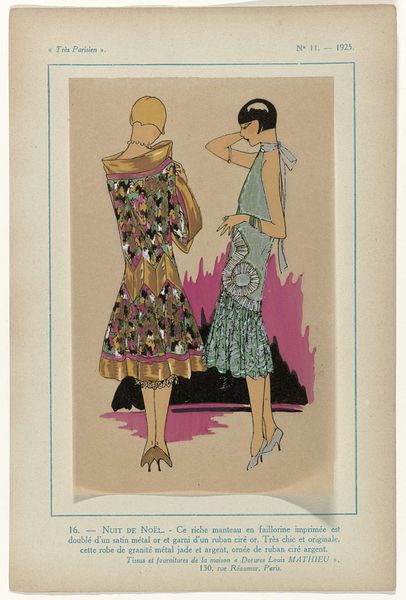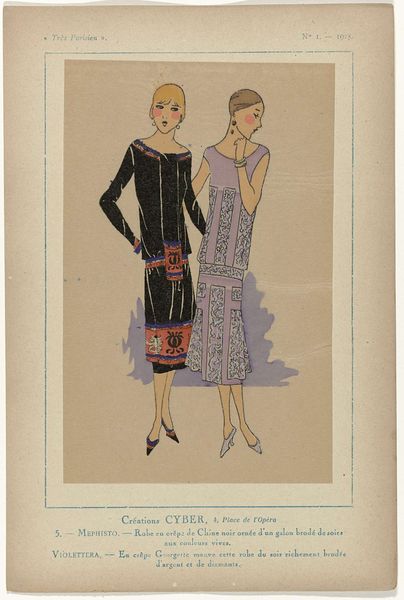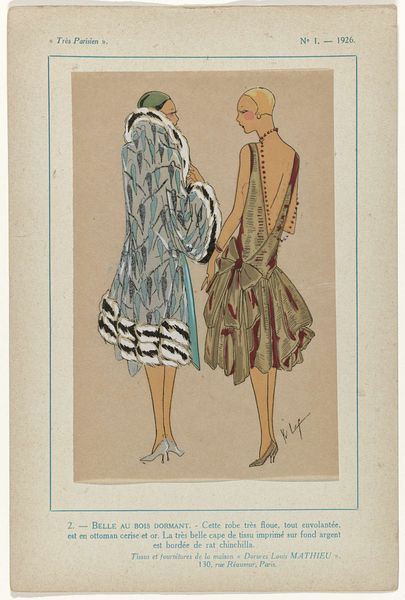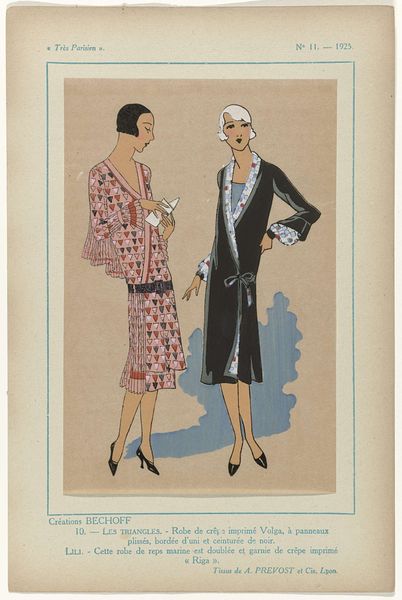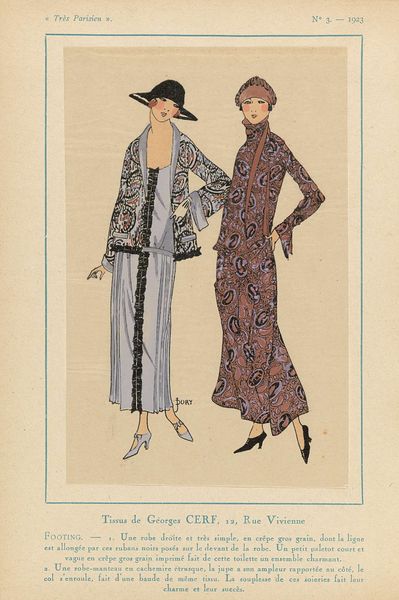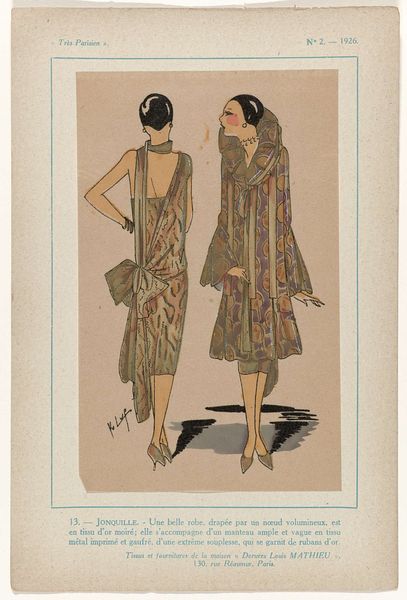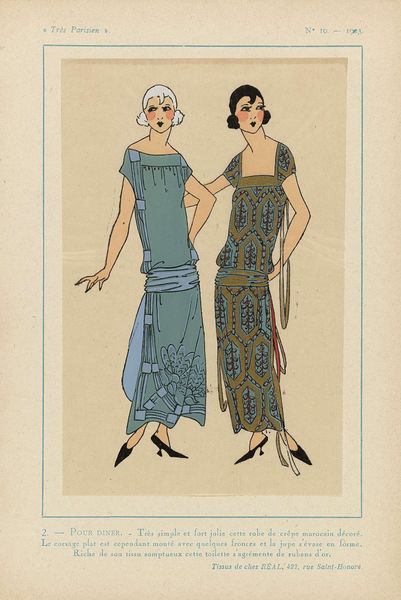
Très Parisien, 1929, No. 11: Créations Jenny. / 4. - Caprice. - Robe en lainage... 1929
0:00
0:00
yvluq
Rijksmuseum
drawing
#
portrait
#
art-deco
#
drawing
#
traditional media
#
flat colour
#
historical fashion
#
fashion sketch
#
dress
Dimensions: height 267 mm, width 177 mm
Copyright: Rijks Museum: Open Domain
Editor: Here we have "Très Parisien, 1929, No. 11: Créations Jenny," a drawing from 1929, currently held at the Rijksmuseum. It presents two women showcasing dresses, seemingly a fashion sketch. What strikes me is the artist’s focus on the garment’s texture and line, especially the layered dress on the right. How would you interpret this work from a formalist perspective? Curator: Indeed, it's quite intriguing. Focusing on the internal elements, notice how the artist, Y.v. Luq, employs a limited color palette - predominantly muted tones, punctuated by restrained reds and whites. This tight control contributes to the drawing’s inherent structural balance. Note how the composition emphasizes verticality and planar space, flattened perspective, creating a distinct sense of Art Deco aesthetic. The semiotic elements are there in the texture that denote sophistication. Would you agree? Editor: Absolutely, I see that now. The lines defining the garments aren't just outlines; they describe the way the fabric drapes, particularly in the tiered dress, creating a dynamic rhythm. How do you view the significance of the flatness and the restricted palette to its message? Curator: Precisely. The calculated flattening and carefully considered colors allow for an intense focus on form and design. They invite viewers to decipher the underlying formal qualities – proportion, harmony, and the interplay of shapes. In other words, by limiting distractions of representational depth and emotive color, the artist foregrounds the internal mechanics of design. This unveils its formal strength of visual impact. Editor: That’s insightful, I hadn't considered how the flatness amplified the design itself. It brings attention to the composition. I see what you mean by visual strength; I will reflect more on the internal dynamics next time. Thank you. Curator: You're very welcome. Remember, formal analysis is always an act of seeing more deeply.
Comments
No comments
Be the first to comment and join the conversation on the ultimate creative platform.
